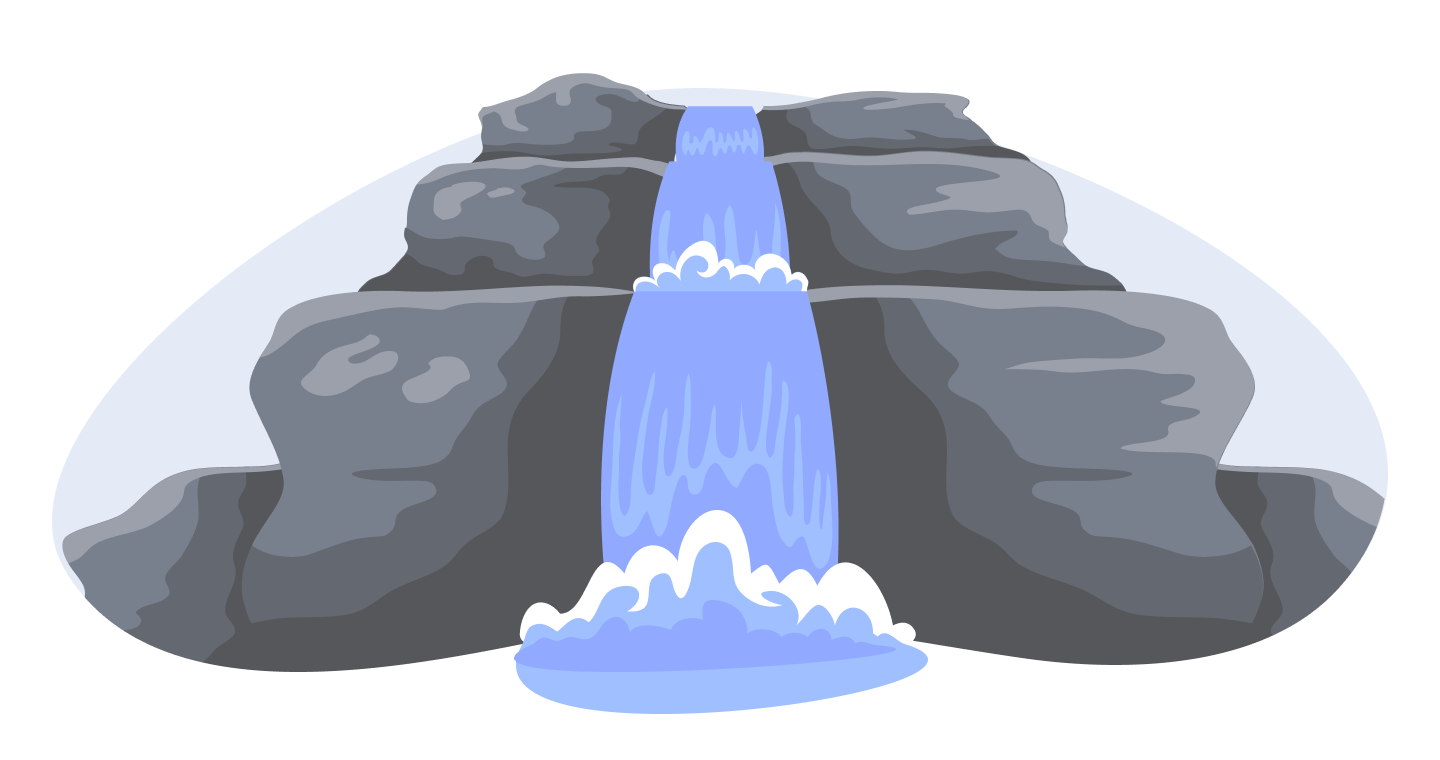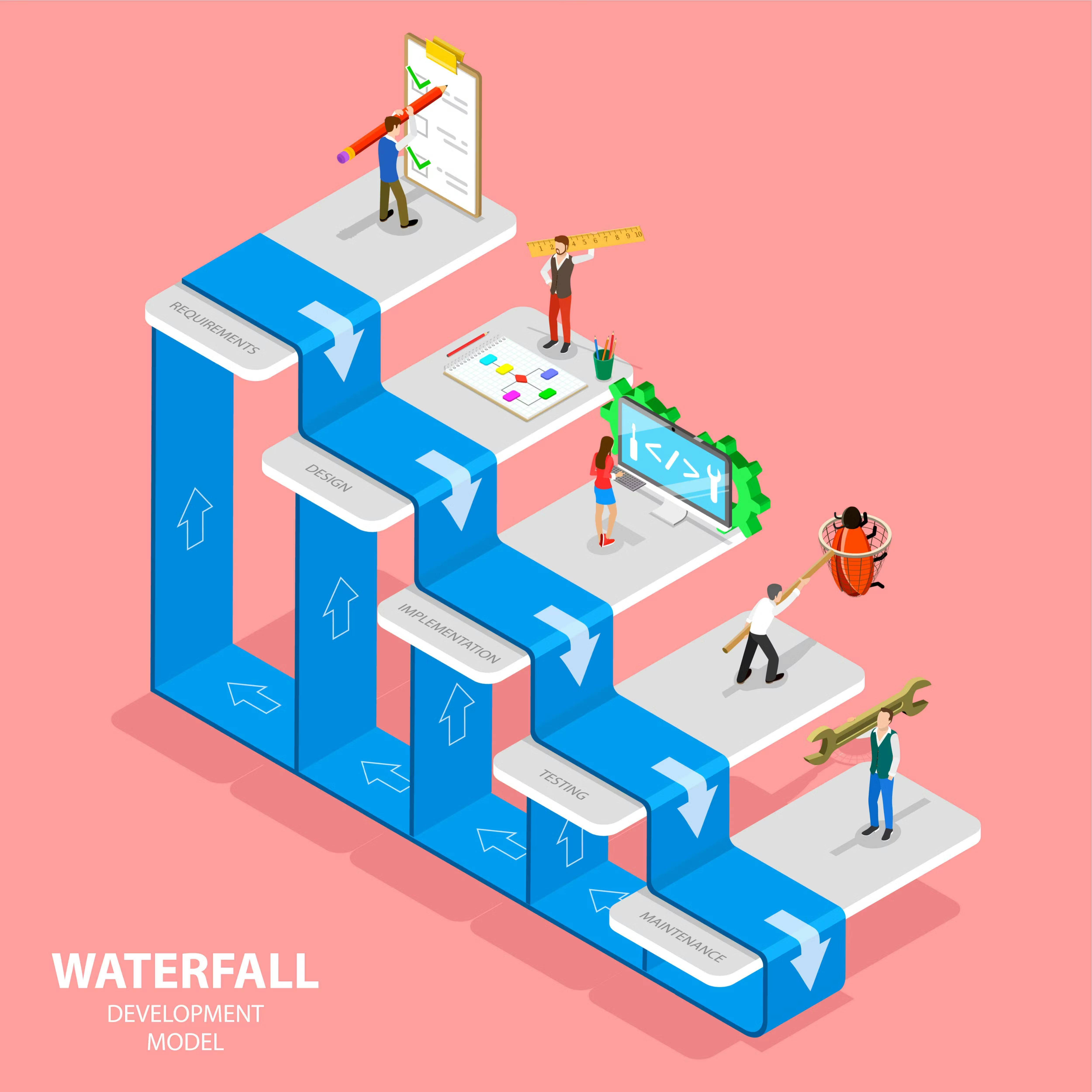Introduction:
Hey there, fellow tech enthusiasts! 🖥️🌟 Are you ready to take a deep dive into the fascinating world of software development methodologies? 🌊🚀 Well, buckle up and get ready to explore the ever-reliable Waterfall model! 🌈💡 In this blog, we've got you covered with an in-depth guide that will unravel the secrets of the Waterfall model like never before. 📚🔍 From its fundamental features to its pros and cons, we'll leave no stone unturned in our quest to understand why this methodology has stood the test of time. So, let's jump right in and embark on this exciting journey to uncover what makes the Waterfall model a top choice for managing software development projects! 💪🔬

What is the Waterfall model?

Oh, I see the confusion now! 😅 Just to clarify, the waterfall model in software development has nothing to do with actual water and rocks. 🚫🌊 It's just a fancy name for a development approach that looks like a waterfall... minus the splash! 🌈💦 So, it's like software developers wanted to make their work sound more adventurous by naming it after nature, but instead, they ended up with a process that's as exciting as watching the water slowly trickle down a rock! 🪨💤

The Waterfall model is a linear and sequential approach to software development. It follows a structured flow, where each phase of the project is completed before moving on to the next. The model derives its name from the cascading effect of progress from one phase to another, just like a waterfall. The different phases of the Waterfall model typically include requirements gathering, design, implementation, testing, deployment, and maintenance.
💼 Phases of the Waterfall model:
🔍 Requirements gathering:
The first phase of the Waterfall model involves gathering and documenting all the project requirements. This phase aims to identify the client's needs, expectations, and desired functionalities. Thorough communication with stakeholders is essential to ensure accurate requirement gathering.
🖌️ Design:
Once the requirements are gathered, the next phase focuses on designing the system architecture. The design phase involves creating detailed specifications, diagrams, and prototypes to provide a clear roadmap for the development team.
💻 Implementation:
In the implementation phase, the development team starts coding the software based on the design specifications. Each module is developed individually, and coding standards and best practices are followed to maintain code quality and consistency.
🧪 Testing:
Once the implementation phase is complete, rigorous testing is conducted to identify and fix any defects or errors. Testing is done at different levels, including unit testing, integration testing, system testing, and user acceptance testing, to ensure the software meets the specified requirements.
🚀 Deployment:
After successful testing, the software is ready for deployment. This phase involves installing the software on the client's infrastructure or making it available for end-users. Deployment may also include data migration, system configuration, and user training.
⚙️ Maintenance:
The final phase of the Waterfall model is maintenance. Once the software is deployed, ongoing support, bug fixes, and enhancements are provided as needed. Maintenance ensures the software remains functional and aligned with changing user requirements.
✅ Advantages of the Waterfall model:
🔹 Clear structure:
The Waterfall model provides a well-defined and easy-to-understand structure for software development projects. Each phase has specific deliverables and goals, making it easier to track progress.
🔹 Client involvement:
The Waterfall model emphasizes upfront requirements gathering, ensuring active client involvement from the early stages. This helps in minimizing misunderstandings and build a product that aligns with the client's vision.
🔹 Documentation:
The Waterfall model lays significant emphasis on documentation. Detailed documentation throughout the project lifecycle aids in maintaining clarity, facilitating future maintenance, and supporting knowledge transfer.
🔹 Easy project management:
The linear and sequential nature of the Waterfall model simplifies project management. It allows for better estimation of project timelines, resource allocation, and identification of dependencies between different phases.
❌ Disadvantages of the Waterfall model:
🔸 Limited flexibility:
The Waterfall model lacks flexibility as it follows a strict sequential approach. Once a phase is completed, it is challenging to accommodate changes without revisiting previous phases, potentially causing delays and increased costs.
🔸 Late feedback:
With the Waterfall model, stakeholders often see the working software only in the later stages of the project. This delay in feedback can result in significant rework if the final product does not meet the client's expectations.
🔸 Risk of outdated technology:
Due to the lengthy development cycles of the Waterfall model, there is a higher risk of using outdated technology or frameworks by the time the software is deployed. This can impact the system's compatibility and future scalability.
🌍 Real-world applications of the Waterfall model:
🏢 Large-scale projects:
The Waterfall model is commonly used for large-scale software development projects, where a clear understanding of requirements and thorough planning are crucial. Examples include developing enterprise resource planning (ERP) systems or complex banking software.
🔒 Regulatory compliance:
In industries with strict regulatory compliance requirements, such as healthcare or finance, the Waterfall model's structured approach ensures traceability, documentation, and accountability throughout the development process.
🖥️ Hardware-oriented projects:
The Waterfall model is also applicable to hardware-oriented projects where software development is part of a larger system development process. Coordinating with hardware development teams and aligning their timelines can be facilitated by the Waterfall model.
🔚 Conclusion:
The Waterfall model has played a significant role in the history of software development and continues to be utilized in various contexts. Its structured approach, clear deliverables, and emphasis on documentation make it a preferred choice for certain projects. However, it's essential to weigh the advantages and disadvantages before selecting the Waterfall model for a specific software development endeavor. By understanding the intricacies of the Waterfall model, stakeholders can make informed decisions and effectively manage their projects to deliver successful software solutions.
That's it, folks! 😊 I hope you found this blog helpful and learned something new. If you did, please show some love with a like ❤, and don't forget to follow me on Hashnode, Blog, Twitter, and GitHub. Also, subscribe to my Hashnode newsletter to stay updated on my future posts. Thanks for reading, and have an amazing day!
